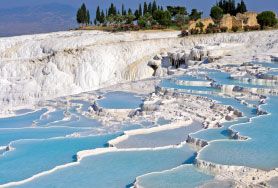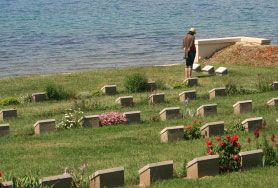The Great Alter of Pergamon is in the Berlin Museum, however the base remains on the upper part of the Acropolis. Other notable structures still in existence are The Hellenistic Theatre – the steepest of any known theatre in the ancient world. The Sanctuaries of Trajan and Anthena, the Library, Royal Palaces and a shrine where the Attalus and Eumenes were worshiped. The main site is accessible by a Gondala from the base of the site.
Down the valley approximately 3 kilometres is the Sanctuary of Asciepius, the god of healing. People with health problems could bathe in the waters of the sacred spring. Galen, the most famous doctor of the ancient Roman Empore worked in the Ascelpium for many years. Notable structures include the Temples of Telesphonrus and Asciepius, and the Via Tecta. The Serapis Temple is known today as the Red Basilica located about 1 kilometre south of the Acropolis. At this temple St Antipas, the Bishop of Pergamon, was ordained by St John the Apostle. He was supposedly burnt alive by an angry mob.











